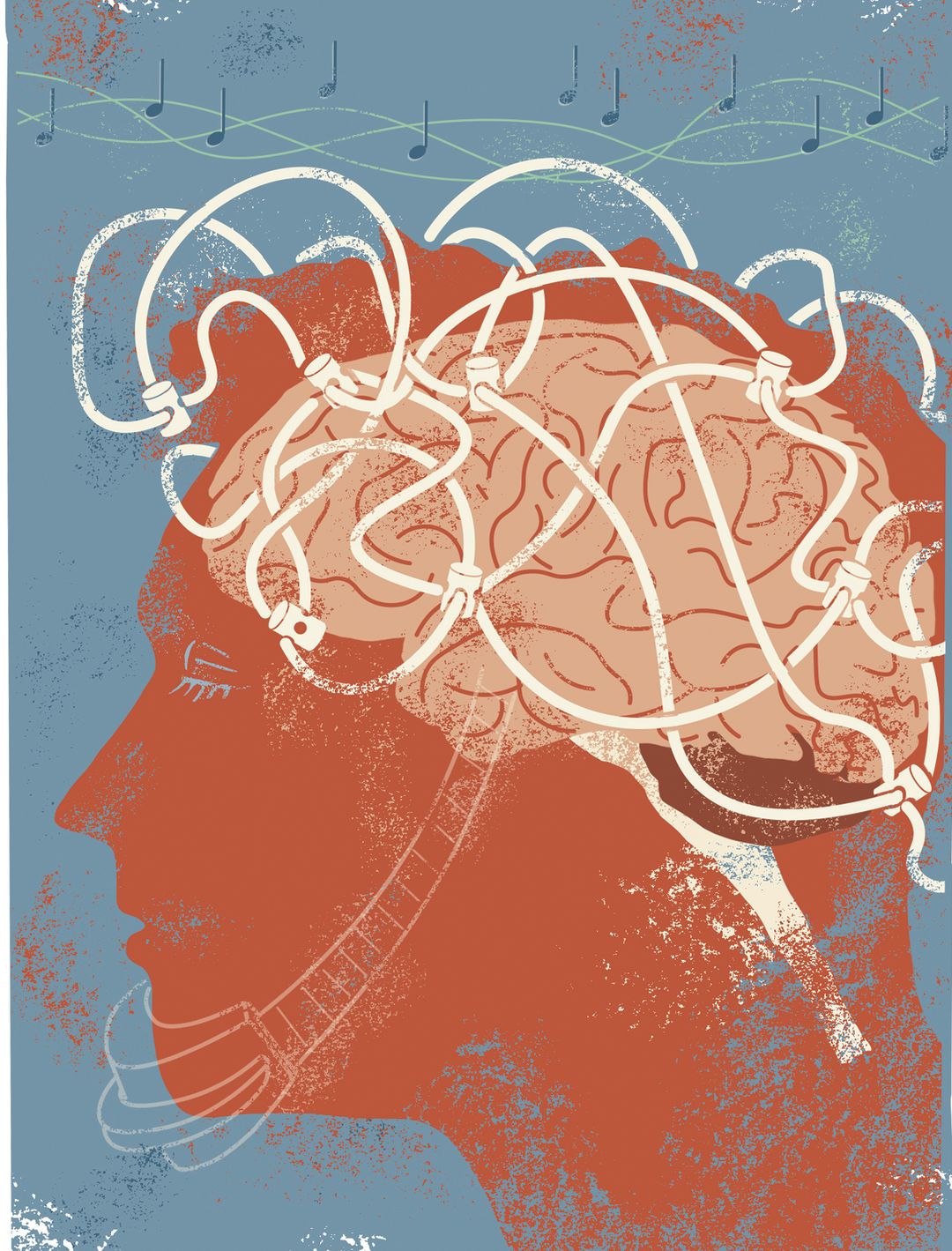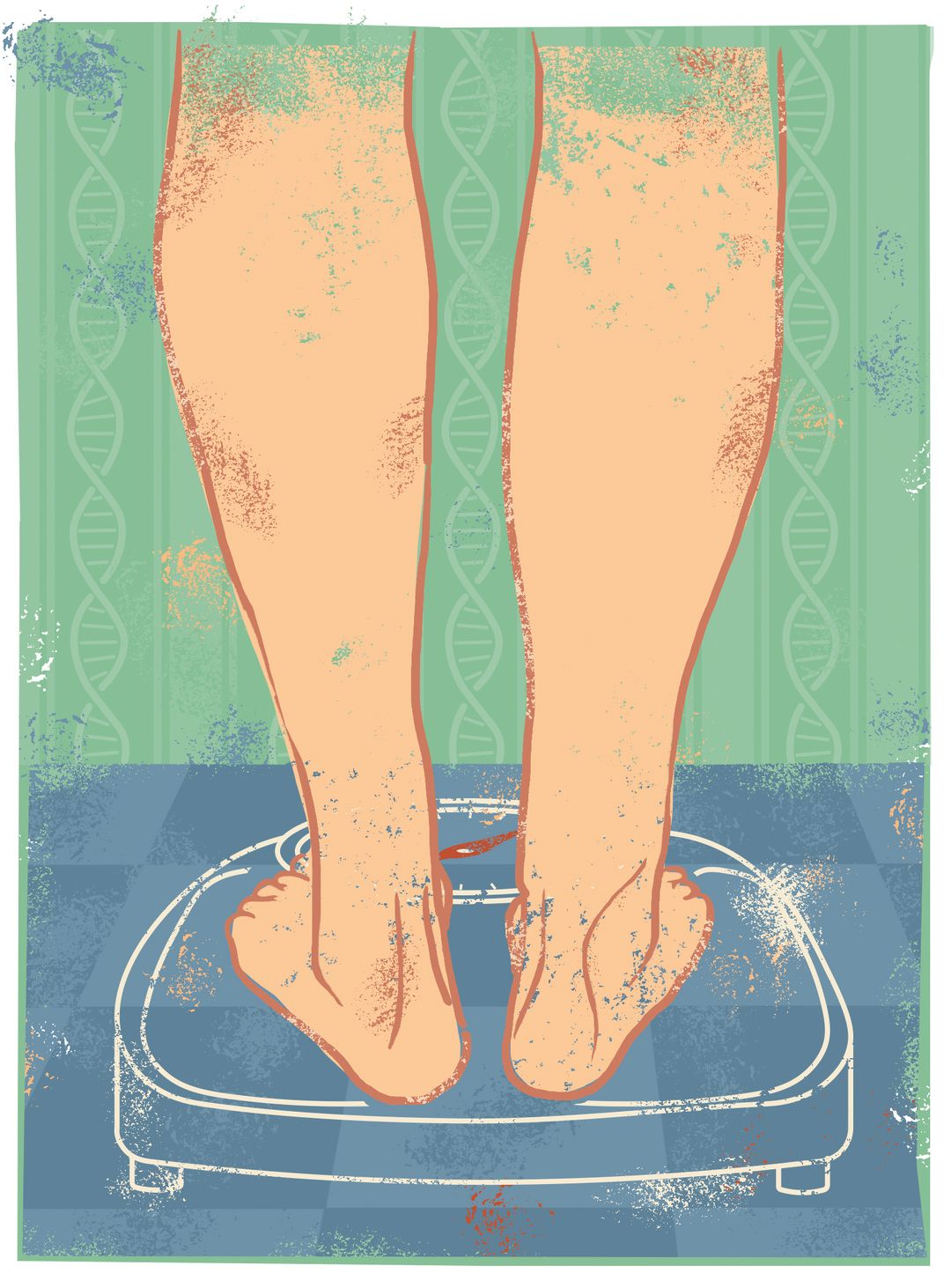"I Was a Human Guinea Pig"

Image: Brucie Rosch
I sat in ice water after exercising.
In my tomboy childhood dreams, the biggest barrier to an NFL career wasn’t my height or my lack of a Y chromosome—it was the ice baths. Many pro athletes (and some amateurs, too) submerge themselves in ice water to slow post-exercise inflammation and help repair micro-tears in muscles. In my quest to become a star receiver for the Buccaneers, I was down for the weight room and wind sprints, but ice baths? Out of the question.
Now that I’m in my mid-30s, recovery is more important than ever. My usual jogging routine comprises 2.5 miles a day on Sunday and Tuesday through Thursday, with a 5K (3.1 miles) on Saturday. I can often feel the burn afterwards, so I decided, for two weeks, to follow my runs with an ice bath.
Here’s how I did it.
Buy 30 lbs. of ice; store in cooler.
Fill tub with cold water.
Go for a run.
Immediately upon return, add ice to water.
Strip to skivvies.
Climb on in.
Sit for 10-20 minutes.
Friends and family responded to the plan as if it were akin to anesthesia-free dental work. Strangest thing, though: The sudden plunge into the ice wasn’t all that traumatic. It was kind of refreshing. The key was committing to it without hesitation. Once I was on my butt in the tub, the hard part was already over (although with a yelp of shock every time). And the cold soothed my tired legs. In fact, my whole body appreciated the instant cool-off, rather than sitting around and sweating for another 20 minutes post-run.
Overall, though, the baths didn’t confer any lasting advantage. My legs were still tired and a little sore as the back-to-back days added up, and my 5K time stayed the same. Used long term, though, ice baths may help alleviate the accumulated effects of exercise—especially for pro athletes doing much more intense workouts. But considering the additional time and effort, they’re not worth my amateur routine. Still, when my NFL career takes off, I’m game. —Hannah Wallace

Image: Brucie Rosch
I turned my brain waves into music.
I've always been rather, um, wound up—which is a nice way of saying “anxious.” So when I found out that Sarasota’s MindSpa Integrative Wellness Center offers brain music therapy, a treatment that turns your brain waves into music that you can listen to in order to relax and sleep better (among other benefits), I decided to try it.
When I arrived at MindSpa, I met Dr. George Rozelle, the center’s owner and executive director, and a long-practicing psychotherapist and neurotherapist. Rozelle walked me back to his office, where he did an eval—how do I sleep (fine), do I suffer from depression (nope), do I experience anxiety (yes)—and then settled me into a comfortable chair while he strapped a rubber cap to my head and recorded my EEG. (Real talk: I looked like Medusa, only with wires coiling out of my head instead of snakes.)
“Try to relax,” he urged.
The recording process took five minutes; when it was completed, my EEG was sent off to the Russian lab where, in the 1990s, a team of scientists discovered that brain waves could be converted into music. About a week later, I received a relaxation track and an activation track. I downloaded the files to my iPhone, strapped on my headphones and pressed play. The plinky piano music that flooded through my earbuds reminded me of classical music—slow and soothing.
For the next few weeks, I listened to the music at bedtime and just after waking up. The results were mixed. I did find that the eight-and-a-half-minute relaxation track calmed me and prepped me for sleep; I enjoyed closing my eyes and letting the music wash over me. But I can’t say I slept better or longer than usual. And the activation track, which I listened to immediately after I woke up, didn’t do a thing—it still took my daily cup of coffee to jolt me into a state of functional humanhood. (I think my husband was hoping it would magically make me into a morning person, but no dice.)
Still, it’s seriously cool to listen to your own brain music. —Megan McDonald

Image: Brucie Rosch
I had my genes tested for weight loss.
When I heard that Sarasota’s ARCPoint Labs now offers GxSlim, a test that analyzes how certain genes affect your ability to lose weight, I was all for it.
The test itself took all of 10 seconds. A technician at the ARCPoint office on Fruitville Road performed a simple cheek swab. I waited about two weeks to get the results. And I started to worry. How would I respond to this information? What if the results were discouraging? Was I going to have to obsess over every bite of food or step of exercise, frustrated that I could never achieve my ideal weight?
The results, which can be accessed via an interactive website, add up to about 50 pages dense with scientific data, with each gene labeled by its name, basic function and “rating.” In just a moment’s scan of my report summary, I saw it: Regarding genes DRB2 and LPL, “Fat loss response to cardio: low.” A little voice inside my head screamed, “So basically you’re saying I shouldn’t even bother with exercise?”
So for me, arguably the most important part of this process was the counseling session with a reassuring health expert who guided me through each result and explained how I can work with my genes to customize weight loss. For instance, my “low” response to cardio means I should focus on longer, lower-intensity workouts—which means I now beat myself up less when I have a slow jogging day, and I take more joy in long walks.
Other genes indicated I have “slightly enhanced” protein utilization and a tendency for low levels of vitamins B6 and B12, both important in weight loss. Overall, my “weight loss ability with diet and exercise” was rated “below average.” But the counselor assured me that this just meant losing weight will take a little more time, which had the effect of adjusting my expectations. Now I don’t look for instantaneous weight loss. I know I have to be patient, and I know it’s not my fault—it’s my genes. —Hannah Wallace
I wore a CPAP machine for sleep apnea.
I‘ve always been a snorer, but I didn’t think it bothered me. After all, I was asleep.
But snoring can be a sign of sleep apnea, or prolonged periods of not breathing during sleep, which can have far-reaching
effects on your health beyond robbing you of rest. After my father, also a serious snorer, was diagnosed with the condition, I made an appointment with a sleep clinic, too.
The testing experience is not fun. In a hotel room-like clinic, a technician sticks sensors all over your skull, chest and extremities, with wires attaching you to a bedside machine. Then you’re tasked with sleeping the night, knowing full well you’re being watched the whole time. At some point I drifted off long enough for the technician to verify: I have sleep apnea.
I was fitted for a CPAP (Continuously Positive Airway Pressure) machine, which floods air through a tube and into your airway to keep it open during unconsciousness. CPAP facemasks range from little nose inserts to giant pieces that cover half your face; mine fits over my nose only, with a seal that sits on my upper lip, cheek bones and the bridge of my nose.
It takes some getting used to. For weeks, as I tried to get comfortable, the seal would inevitably slip, releasing a loud stream of air, sometimes directly into my eyeball. When I managed to sleep, I’d unconsciously tear the whole thing off my face and awaken to find it whooshing uselessly on the floor. But I kept at it, eventually getting used to it and even comfortable with it. And sure enough: It works. The first time I slept for an extended period of time with the mask on, I awoke after just two hours feeling like I’d slept deeply for a full night.
Now I use the CPAP every night, and I almost always feel well rested in the morning. If ever I go without it, I wake up exhausted. The CPAP’s not sexy, but it works. —Hannah Wallace